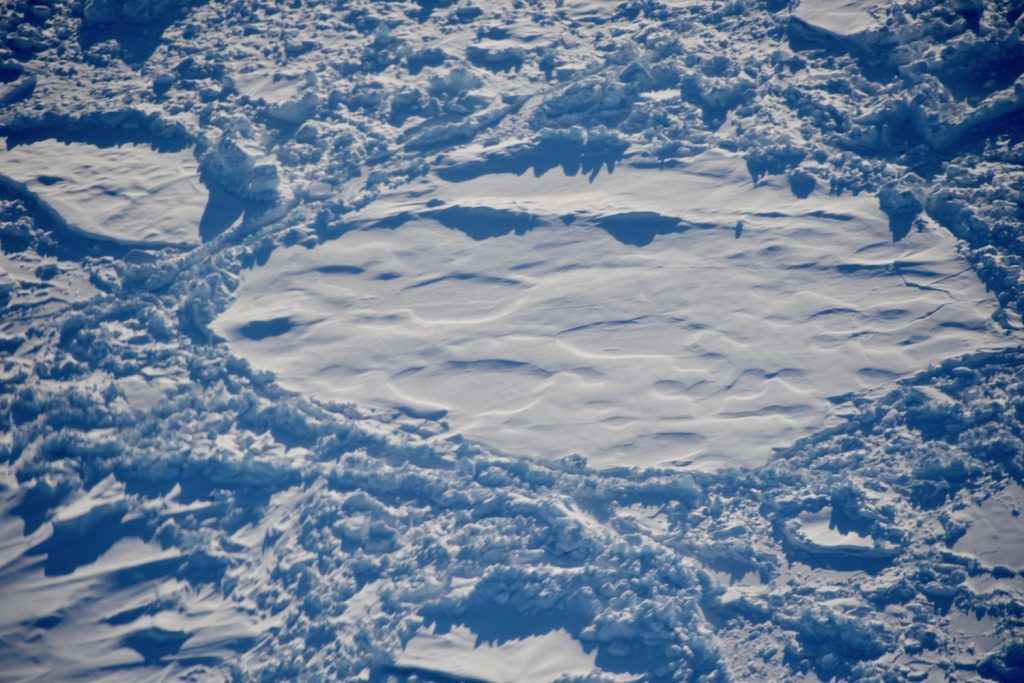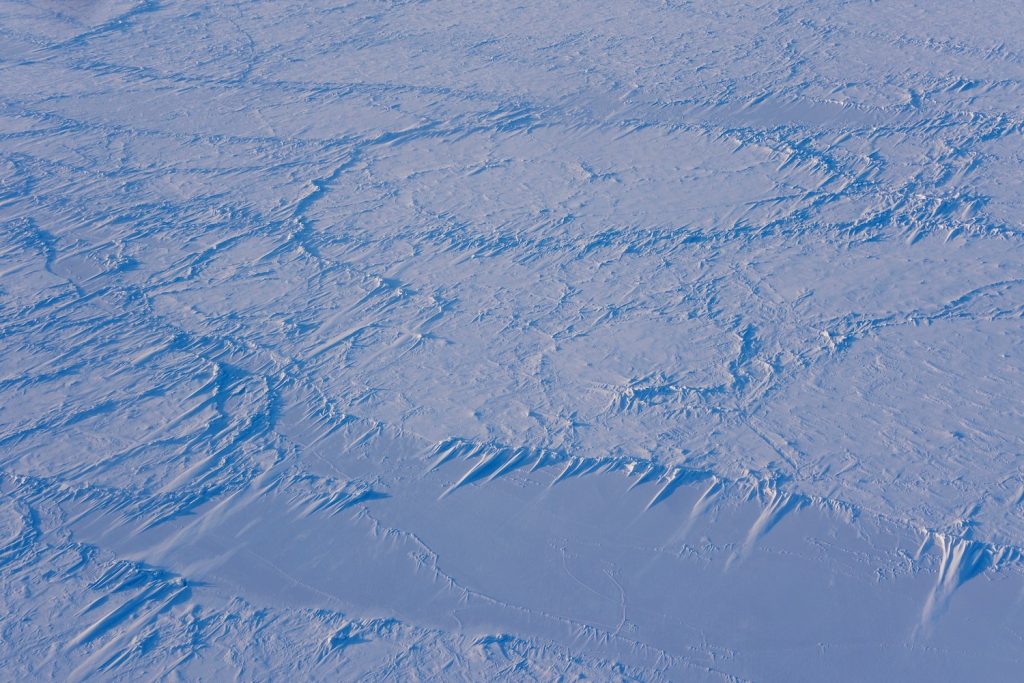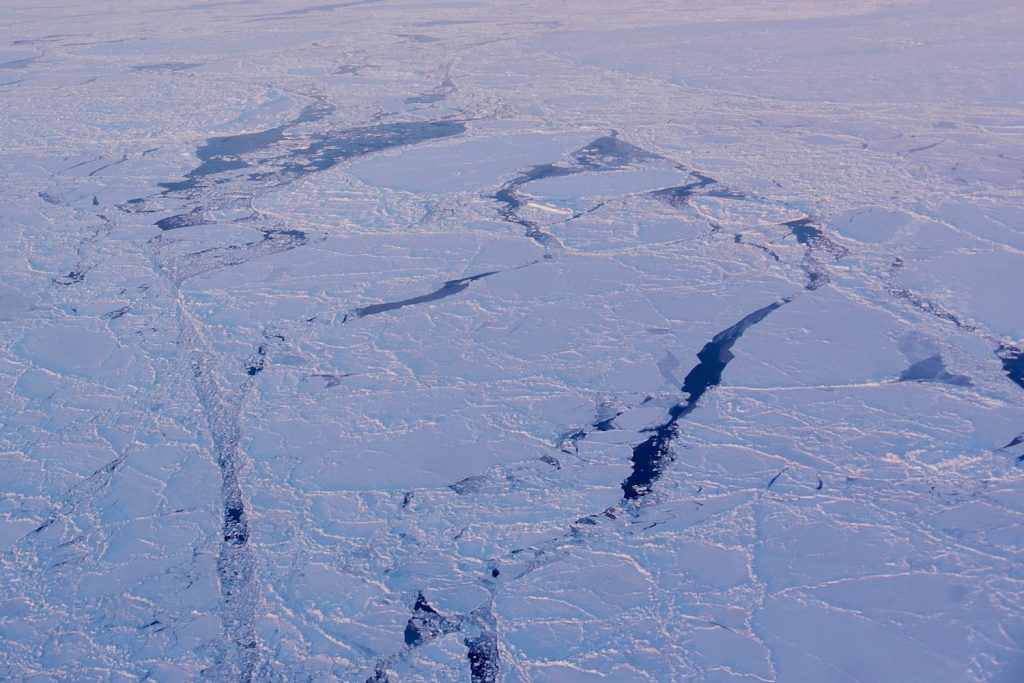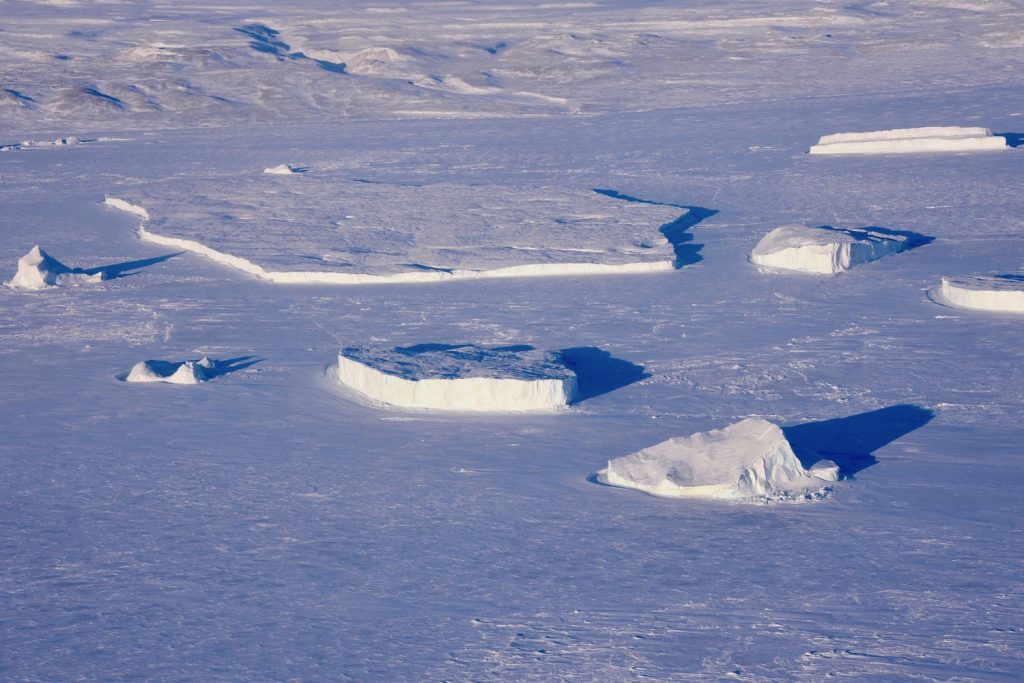An important goal of the European Space Agency’s CryoSat mission is to measure, from space, changing sea-ice thickness over time. Yet, a remarkable feature about Arctic sea-ice is that you actually rarely see it – at least when you look at it from above. So, why is this?

A lonely ice floe surrounded by a field of rubble ice. (ESA)
Arctic sea-ice is usually blanketed with snow and frost, masking the ice and ocean below. Even when walking on sea ice it rarely feels like ice – it’s more like a snow field. I’m guessing that for someone who has never travelled to the Arctic, they would be hard-pressed to identify a sea ice ‘landscape’ from most of the pictures I’ve taken out of the Twin Otter aircraft window over the past days. Certainly, the smooth dark-blue or semi-transparent ice we sometimes see and even skate on in the Netherlands is something completely different.

A thicker ice floe in the background contrasts with the smooth recently frozen ice channel in front. (ESA)
It is the texture of the surface that provides clues as to what lies beneath. Sea ice experts I’ve met will tell you that each ice floe or ice field has its own story and can be read like a book. I’m not an expert, but this doesn’t stop me from marvelling at the incredible variety of textures and conditions we encounter during our ESA campaign.

Open water leads, which occur when ice floes pull apart. (ESA)
A defining feature of many ice areas are the rubble-like ice and snow boulders, which result from the clashing between the edges ice floes. These can strewn somewhat randomly or form intricate wall-like zig-zagging rows and ridges, which, when combined with the smoother inside area of ice floes, creates a continually varying mosaic pattern.

This is ice floating in the sea, but the main thick ice floes are actually icebergs and originate from the interior of Greenland. (ESA)
In some cases, ice rubble fields dominate and contrast with isolated smooth ice floes that appear somewhat lost in all this wild texture.
Smooth surfaces with less snow and linear features often result through open water gaps between ice floes which quickly refreeze. From time to time, we encounter areas of open water or very thin ice coloured in a subdued blue colour, sending curls of water vapour into the cold Arctic air above.
Post from: Malcolm Davidson (Head of ESA’s Earth Observation Campaigns) on campaign in the Arctic to validate data from CryoSat and to test new satellite technologies








Discussion: one comment
Thanks for keeping us posted at the Cryosat2017 science meeting.!